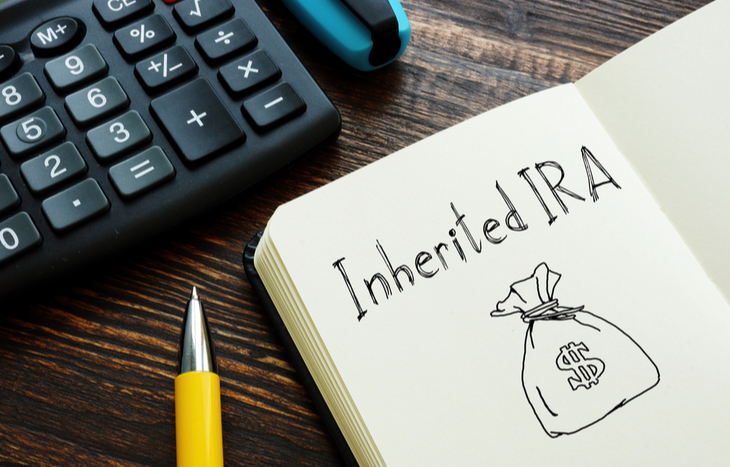What is an Inherited IRA?
Also known as a beneficiary IRA, an inherited IRA is one that’s passed from one person to another after the original owners’ death. The beneficiary is usually a spouse, heir or a trust established for someone else. Despite its name, however, an inherited IRA doesn’t function in the same way a traditional or Roth IRA functions, and there are special tax implications that come attached to these accounts.
Many inherit an IRA or are in line to inherit one as the primary beneficiary of someone else’s IRA. However, it’s important to understand the many stipulations that come with it. Primarily, this means having a clear understanding of how you can interact with the account and the tax considerations that accompany it.
Here’s a look at inherited IRAs: what they are, the rules that govern them and how to navigate inheriting one as a beneficiary. For those faced with an unexpected IRA inheritance, it’s best to talk with a tax professional to get situation-specific insight.

A Brief Overview of Inherited IRAs
Contrary to the name, you don’t inherit someone else’s IRA when they pass. Rather, you must open a new IRA account and roll the holdings of the deceased’s account into that new IRA. As a result, the funds in the inherited IRA can actually come from any type of IRA: traditional, Roth, rollover, SEP or SIMPLE IRAs. Beneficiaries need to document this rollover of assets via IRS forms 1099-R and 5498.
After creating a new account and rolling in the inherited assets, individuals cannot make contributions to their beneficiary IRA. Moreover, they must take distributions from the account according to their age and relationship to the benefactor. Stipulations for when, how and how much are contingent on whether the beneficiary is the spouse of the deceased or someone else. These regulations were overhauled in the Setting Every Community Up For Retirement Enhancement (SECURE) Act of 2019.
Inherited IRA Rules: Spouse vs. Non-Spouse
Most benefactors choose to leave their IRA to a spouse if possible, because taxation and distribution rules are more lenient. Namely, spouses can roll all or part of the inherited IRA over into their own retirement account. However, other heirs cannot. The major benefit here is the ability to defer required minimum distributions (RMDs) until age 72. Conversely, non-spouse heirs must keep inherited funds separate from their own IRA.
The other major difference between spouse and non-spouse inheritance is in how the IRS mandates RMDs. Spouses must continue to take RMDs if the original owner was already receiving them; if not, the spouse can delay RMDs until age 72. Non-spousal heirs, on the other hand, must cash out the inherited IRA within a 10-year period upon receiving the funds. That said, there are exemptions. These include heirs that are disabled or chronically ill, not yet 18 years of age, or within 10 years of the decedent’s age.
In a nutshell, spouses have more flexibility in how they handle the funds bequeathed upon them through a beneficiary IRA. The ability to roll inherited funds into their own IRA allows spouses to put off RMDs. In addition to passing on the cumulative wealth to a next of kin in the event of their death.
Contributions and Tax Considerations
As mentioned, benefactors cannot contribute additional funds to an inherited IRA. Instead, benefactors can take advantage of tax benefits that come from the IRS’ special treatment of beneficiary IRAs.
Non-spouse heirs required to take RMDs can do so tax- and penalty-free, even before the minimum age of 59½. This is in stark contrast to normal IRA stipulations, which incur hefty penalties for withdrawals before retirement. In this way, beneficiaries can access the wealth left to them early and potentially put those funds to work elsewhere. For instance, through new investment vehicles. It’s important to note, however, that funds need to be at least five years vested by the original account owner to qualify for tax- and penalty-free distribution.
Failing to withdraw funds within the 10-year period specified by the SECURE Act can leave beneficiaries facing a big-time tax bill. Specifically, the IRS will levy a penalty amounting to 50% of the remaining account balance. The same goes for RMDs. Failing to take RMDs triggers a tax penalty of 50% of the required RMD.
How to Handle in Inherited IRA
There are plenty of stipulations that accompany an inherited IRA. When it comes to managing this newfound wealth, there are several withdrawal strategies to consider, including spousal transfer (where applicable), the life expectancy method, the 10-year method and the lump sum distribution. Your situation and relationship to the deceased will inform the best strategy for handling the funds and the RMDs that accompany them.
Inheriting an IRA can be confusing for everyday investors as they seek to understand their role as a beneficiary. This essentially makes it difficult to stay tax compliant. Those set to inherit another’s retirement savings via a beneficiary IRA should consult with a tax and estate planning professional. They can also consult a financial advisor to better-understand their unique situation.
Likewise, if you’re engaged in succession planning and are thinking about the best way to structure your own retirement account to live on after you, it’s prudent to plan long-term. Discover the best investment newsletters for tips, advice and information on long-term investment planning and generational wealth building. You’ll get the information you need to plan lifetimes ahead, to ensure your wealth far outlives you.





